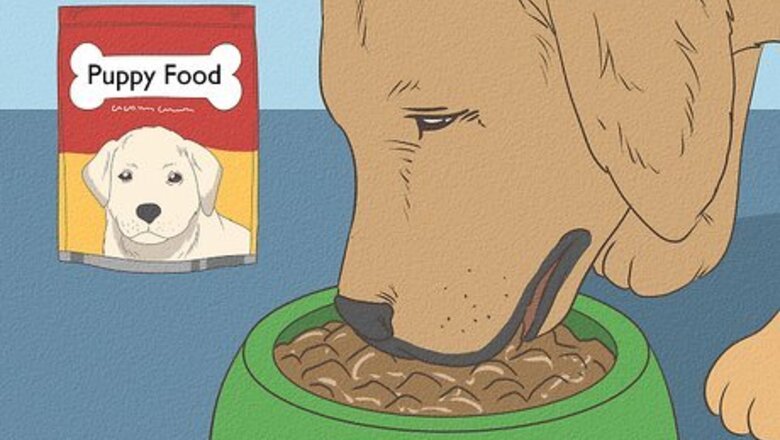
views
Weaning Your Puppies
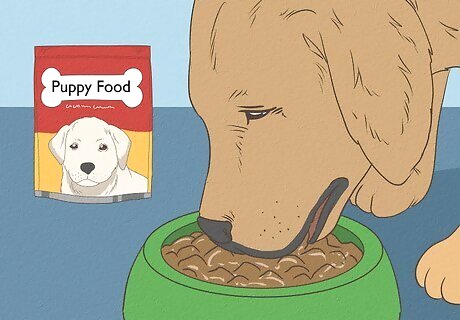
Transition your pregnant dog to puppy food early. On one hand, you’ll need your pregnant bitch to gain roughly 15-20% of its original weight by the time it gives birth to its litter. Puppy food is high in protein and basic nutrients and as such will help your dog gain that much needed weight. With this in mind, you don’t want to cause your dog to gain too much weight. You might choose to begin feeding your pregnant pooch puppy food when you discover her pregnancy or if you know that your dog is prone to weight fluctuations, you might decide to wait until 2-3 weeks before its whelping (the birth). Moreover, you should choose the puppy chow that you plan on feeding your puppies. This will make it easier for the puppies to transition to puppy food — in terms of their overall health and more specifically their GI balance.
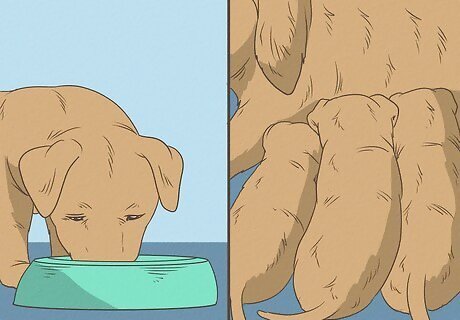
Gradually offer your puppies puppy food. Begin when they turn 3 weeks old. You won’t completely — cold turkey — wean them off of their mother. You’ll begin by giving them puppy food for approximately 10% of their daily caloric intake. They’ll continue to nurse off of their mother, while they get used to eating their puppy food. Over the next 2 to 3 weeks, you'll feed them puppy food more and more and they'll nurse less and less. Do not rush weaning for any puppies that are slow to eat on their own. This can lead to malnourishment. It's better to let them continue to nurse from their mother and slow the puppy weaning process a bit.
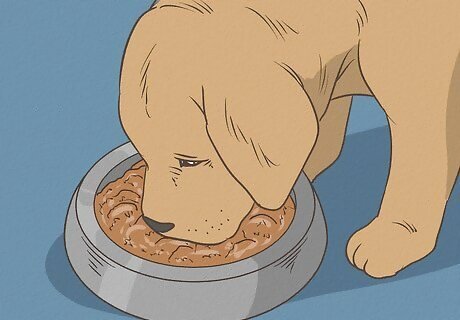
Encourage your pup to eat their puppy chow. Most likely, if you place the puppy in front of its food, it will eat it. Some puppies, on rare occasions, may resist eating the puppy chow. Simply pick up the puppy and place it in front of its food. Do this once or twice. Eventually, your puppy will chow down on the food.
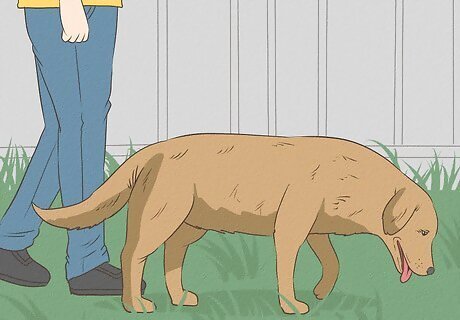
Remove the mother while they feed on puppy chow. Start by separating the puppies from their mother for 1 hour, 2 or 3 times a day. Take the mother to another part of the yard or house. Leave the puppies with their food bowls. They’ll undoubtedly whine at first. Eventually, they’ll learn that their food bowls contain delicious and healthy food. You are mimicking the process that occurs in the wild, so don’t feel bad.
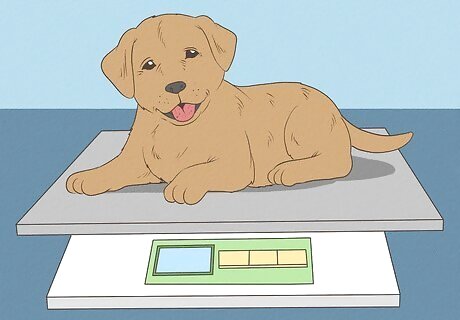
Keep a close eye on your pups. During the weaning process, monitor their health. Make sure that they are gaining weight equally. Check for vomit and diarrhea. Consult your veterinarian if any problems or questions arise.
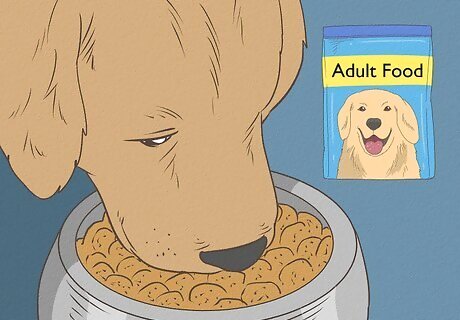
Switch the mother back to regular dog food at 4 weeks. As with all the other steps, the key is gradual change. Begin by replacing 1/4 of her puppy food with her regular adult food. This will help her digestive system cope with the change and it will continue to give her milk the nutrients of the puppy chow. Over the next couple of weeks, switch her entirely back to her normal adult dog food.
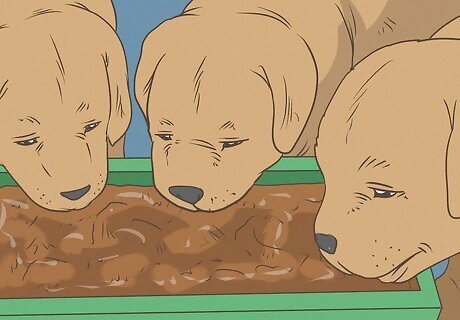
Completely wean your puppies off their mother's milk. At around 7 weeks old your puppy should be completely weaned. They should also be eating dry puppy food and drinking water.
Preparing the Food
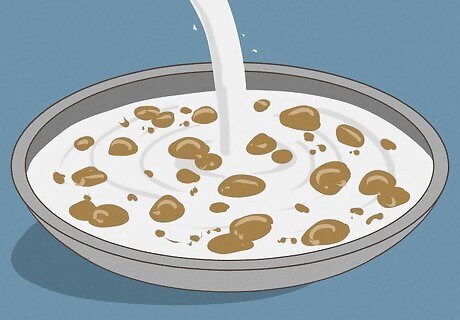
Mix dog replacement milk into their dry puppy chow. You can purchase this milk from any pet supply store or your vet’s office. Soak the dry puppy food with dog replacement milk and put it in a large, shallow pan when the puppies begin to walk around at about 3 weeks of age. You want it to be accessible to the puppy. They won’t be able to get to the food, if you use a larger, deeper bowl. Dog replacement milk will provide extra nutrients and will help to keep the young puppies from choking on dry kibble when they start to sample the food.
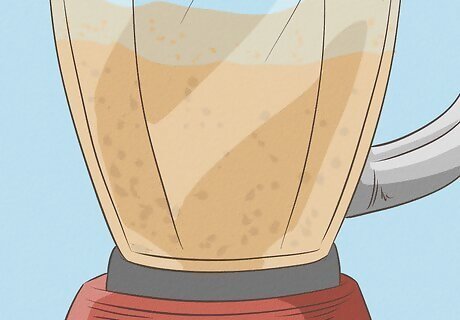
Consider using a blender. For puppies, this soggy mixture of puppy chow and replacement milk might still be too much. Take a blender and blend up their food until it is the consistency of human infant cereal. 2 cups of high quality dry puppy food, 12.5 oz liquid puppy milk replacer, and about a 2 cups of water, combined in a blender, will feed about 6 puppies. After 1-2 weeks, you can introduce them again to dry food.
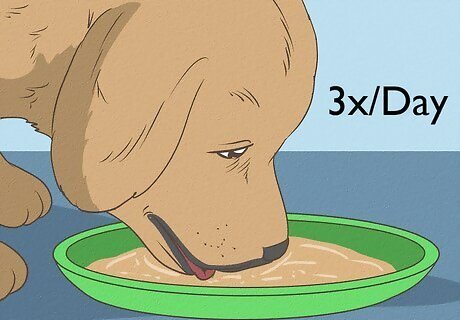
Feed the puppies 3 times a day during the puppy weaning process. Puppies under six months of age should be fed 3 times daily; after 6 months, they may be fed 2 times a day. Make sure that you are feeding them at even increments and at the same time each day. You want to get your new puppy on an eating schedule. This will manage their food expectations and keep them from begging all the time. When you shift them to 2 meals a day, you can just get rid of the lunch (middle) meal. EXPERT TIP Brian Bourquin, DVM Brian Bourquin, DVM Dog Trainer Brian Bourquin, better known as “Dr. B” to his clients, is a Veterinarian and the Owner of Boston Veterinary Clinic, a pet health care and veterinary clinic with three locations, South End/Bay Village, the Seaport, and Brookline, Massachusetts. Boston Veterinary Clinic specializes in primary veterinary care, including wellness and preventative care, sick and emergency care, soft-tissue surgery, dentistry. The clinic also provides specialty services in behavior, nutrition, and alternative pain management therapies using acupuncture, and therapeutic laser treatments. Boston Veterinary Clinic is an AAHA (American Animal Hospital Association) accredited hospital and Boston’s first Fear Free Certified Clinic. Brian has over 19 years of veterinary experience and earned his Doctor of Veterinary Medicine from Cornell University. Brian Bourquin, DVM Brian Bourquin, DVM Dog Trainer Consider offering your puppies canned food in addition to their solid food. Although your puppies will get the nutrients they need from solid kibble, it's a good idea to offer them both canned food and dry food. That way, if they need to eat canned food later in life for any reason, they'll already be used to it.













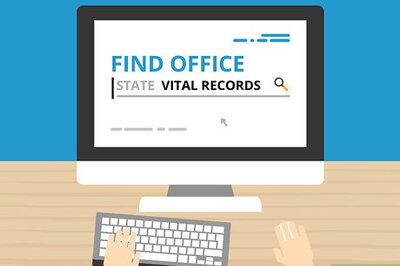




Comments
0 comment